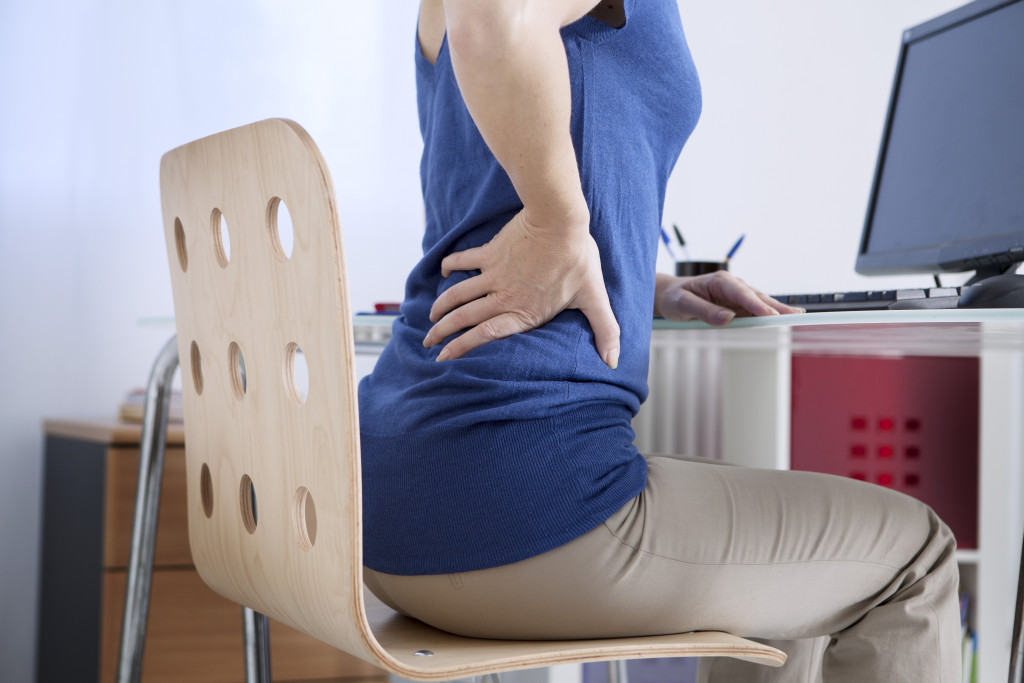As people get older, they need to make special arrangements in their homes to prevent or reduce the risks of falls. Since many accidents can occur in the bathroom because of sitting and standing they have to do and the possibility of dealing with wet floors, this room might require bathroom safety rails to keep them steady.
But it is just as important for one to understand why they might be prone to these injuries in the first place. One of the areas they can focus on is the body’s center of gravity.
What Is the Body’s Center of Gravity?
The center of gravity is the point where all weight acts. This point is considered at about waist or stomach level for most people, though it can vary depending on the person’s size.
The farther away this center of gravity is from its attachment to the surface under it, the more unstable an object becomes. This is why when something tilts – or tips – gravity pulls it in the direction of the lowest center of gravity.
Since the center of gravity is the average location where an item will balance when placed on a fulcrum, the greater the distance between the object’s center of gravity and its fulcrum, the easier it will be to tilt. The closer this distance is to zero, however, the more stable an object becomes.
How Are Balance and Center of Gravity Related?
When standing up straight, our body’s weight exerts a force on each leg that balances one another out, resulting in maintaining us in a stable position. If we tilt too far forward and lean our weight onto our toes, we would fall over forward. Leaning toward your toes makes us lose contact with the floor or whatever we are standing on due to friction, causing both legs not to support our weight.
It also works the same if we were to lean backward. This would cause us to lose balance and fall back due to no contact with the floor. If your center of gravity is off-balance due to your body’s position, you will lose balance and stability.
To maintain balance, you must have your center of gravity directly above the part of your body that’s in contact with whatever you are standing on. This is why when we stand up straight, our weight exerts a force onto each leg equally so that the equilibrium of our bodies will not be disrupted by tilting forward or backward.

Aging and Its Impact on Your Center of Gravity
The person’s center of gravity changes depending on their motion. Because the body’s designed to achieve balance, it will “autocorrect” to ensure that you won’t fall. However, some factors can cause a shift in the body’s stability, and one of these is aging.
In 2013 research in the Aging Clinical and Experimental Research, the team studied the link between impaired mobility and the increased risk of falls. In particular, can changes in one’s postures due to aging be associated with poorer movement?
For this research, the team worked with at least 40 women between 65 and above. They monitored their weight, changes in height, activity, and age. They also determined their capability to balance by measuring their partial and whole-body centers of gravity above their hips and knees.
Their analyses then revealed that:
- Compared to the younger subjects, the older ones are more susceptible to kyphosis, wherein the spine has an excessive curvature, making them appear more hunched. This means that their bodies are already leaning forward most of the time.
- These women with kyphosis also possessed a more posterior position of the hips and decreased height.
- Inactive or sedentary women are more likely to lean more.
- Forward lean can be associated with muscular weakness or even the fear of being unstable. This fear, although based on the mind, can worsen the problem. They might avoid activities that improve their sedentary lifestyle or isolate themselves from others.
- Stooping is also greatly associated with osteoporosis, which occurs when the bones become brittle and, thus, weak.
Overall, unhealthy changes in aging such as a sedentary lifestyle, obesity, and osteoporosis can potentially increase the risk of having a bad posture, affecting balance and the body’s ability to identify its center of gravity.
Unfortunately, once osteoporosis or bone loss sets in, this cannot be reversed. But you can do something to delay its progress. If you are not experiencing it yet, but you’re getting old, now is the best time to work on your balance. Maintain a healthy weight, know the ideal calcium levels, and engage in safe physical activities.
